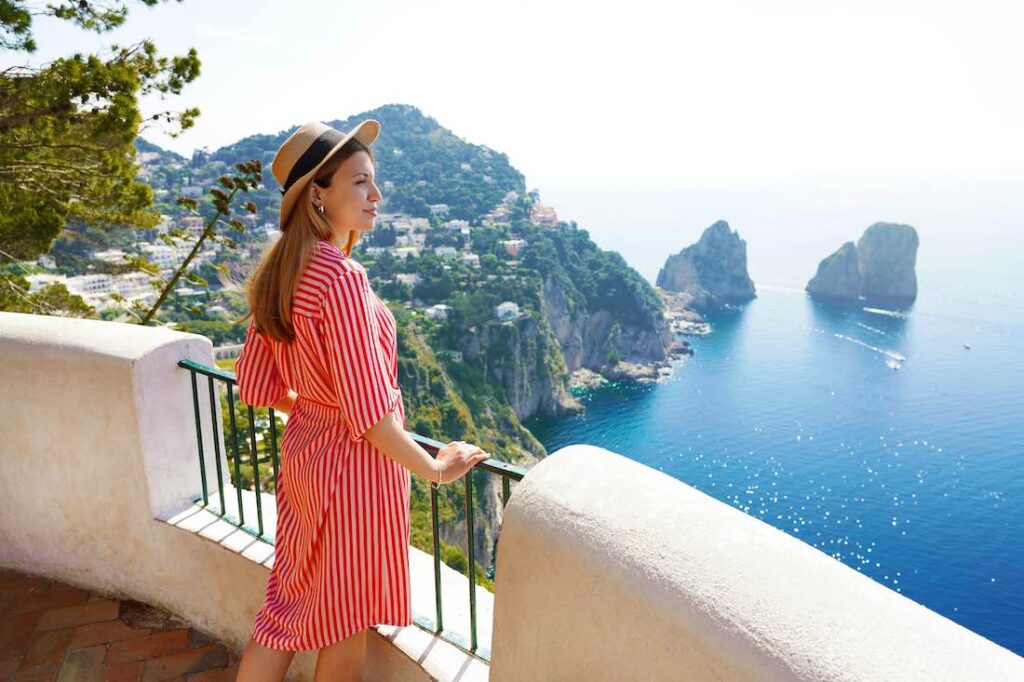Ever return from a vacation that was supposed to be relaxing and restorative only to collapse on the couch with an exhausted declaration of, “I need a vacation from my vacation!”? If so, you’re doing it wrong.
A vacation should be healing, a departure that plucks you from real life and plops you down somewhere thrilling. And as a truly restorative vacation—one that leaves you refreshed and inspired rather than frustrated and tired—is something different for everyone, pulling it off requires some thoughtful engineering.
Which is why you’ll find conflicting recommendations in our getaway guide: Take it easy, challenge yourself, stay home, get lost. The binding thread across these vastly varied endeavors is this: Each requires an open mind and complete commitment. That squishy stress ball on your desk? That’s your vacation. Hold it close. Squeeze it. Make every last drop of restorative, unforgettable vacation your own. And then keep it with you.
A relaxing vacation doesn’t have an end. It can stick around, long after you’ve deplaned, unpacked and shifted back into your routine. The experience can nudge you—in some cases, kick you—into trying new things and experiencing greater levels of happiness.
Maybe you pick up a certain culture’s custom or make a restaurant’s dish a staple of your own kitchen. Perhaps you simply start listening to a new band you heard. Maybe you have a conversation with your child that would have otherwise been eternally elusive in your overscheduled day-to-day life. Or maybe by traveling alone, you get to know yourself.
10 best relaxing vacation ideas
A relaxing vacation spurs you to think differently. A relaxing vacation can be restorative, both personally and professionally. Your family and colleagues will thank you. But most of all, you’ll thank yourself.
1. Go on a pilgrimage.
Pick a subject. Pinpoint a spot on the map. Go hog wild.
The reward? Day in and day out, you spend your restorative vacation doing the thing you love most—such as golf. With more golf-course terrain per square mile than anywhere else in the world, the island of Bermuda makes it easy to immerse yourself in the sport in a destination thrilling for even the most accomplished golfer. Hole up at the south shore’s Fairmont Southampton, and fine-tune your short game at its challenging Turtle Hill Golf Club. It’s ranked as the “World’s Best Par 3 Golf Course” by the World Golf Awards. A stay at the sumptuous resort is complete with a 31,000-square-foot spa and a nearby stretch of coveted pink-sand beach.

The storied Charles Blair Macdonald-designed Mid Ocean Club on the island’s northeastern end set a lofty benchmark when it opened in 1921. Over a century later, it’s not to be missed. Its most famous hole is the par-4 fifth, a fine specimen of Macdonald’s “cape” hole design. (According to Golf.com, “Most consider the modern cape to involve a risk/reward tee shot with a carry over a hazard, usually water. The approach shot uses the same hazard as the tee shot, and the water usually surrounds the green as well. The hazard often runs along the side of the entire hole, with the green raised above it.”) Back on the south shore at Robert Trent Jones Sr.’s Port Royal Golf Course, home of the PGA Grand Slam of Golf from 2009 to 2014, bank on a few extra minutes for the cliffside 16th.
Also consider: A fun and delicious itinerary for enthusiasts of homegrown food, the Vermont Cheese Trail is a map that allows you to discover (and potentially plan to visit and tour) the state’s more than 40 cheesemakers.
2. Get active.
Go for a run. Swim a lap. Or ride a bike. Or, in the case of the Ironman events, do all three in one of many glorious settings. Completing this kind of physical feat—2.4 miles of swimming, 112 miles on a bike and a full 26.2-mile marathon—would be rewarding in any location. Ironman also offers 70.3-mile courses—half the distance of the full Ironman.

Also consider: An excruciating test of strength and endurance goes best with an unforgettable view. Active.com is a treasure trove of organized athletic endeavors. You can search by event type, date, location, age group and gender. One with particularly breathtaking scenery: the Honolulu Marathon. The 26.2-mile run is “the fourth largest marathon in the United States after New York, Chicago and Boston,” according to the website.
3. Travel alone for a relaxing vacation.
The benefits of flying solo are many, says Kristin Addis, founder and CEO of Be My Travel Muse and the attached blog of the same name, as well as author of Conquering Mountains: How to Solo Travel the World Fearlessly.
“Solo travel allows you to make your own opinions and craft your own unique experience without anyone else swaying your decisions or impacting your feelings,” she says. “It also forces you to be captain of the ship, so to speak, and cultivates fearlessness and problem-solving skills. It’s the perfect path to freedom.”
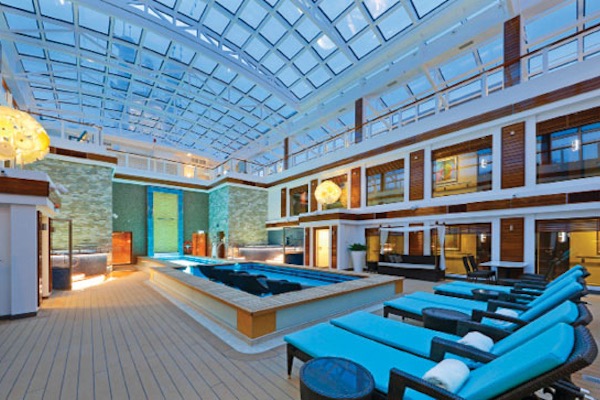
If you’re not ready for a relaxing stag vacation to Malaysia or the Maldives, consider a cruise. Planning is a cinch. In fact, several cruise lines have rolled out the red carpet for individuals—including the Norwegian Cruise Line. Their newest Prima Class ship, the Norwegian Viva, will set sail for the first time in August 2023. According to a company press release, the Viva will have 73 studio cabins for single passengers, “all with exclusive access to the Studio Lounge, a shared private area where they can socialise with other solo holidaymakers and swap travelling tales.” Onboard entertainment will include a production of Beetlejuice: The Musical, a three-level racetrack and spa and fitness areas.
Also consider: For a small-ship experience, Windstar and Lindblad Expeditions offer solo accommodations and—depending on when you book the trip—will waive premium or supplementary fees.
4. Give back.
One of Georgia’s majestic barrier islands, Wassaw Island was named a National Wildlife Refuge in October 1969. And for just as long, this 10,053-acre island marked by dunes, marshes and maritime forest has been a safe haven for loggerhead sea turtles. The Caretta Research Project, operating on the island since 1973, offers volunteers the chance to get involved in the monitoring of these turtles via weeklong stints throughout the summer. Overnight accommodations are rustic—you’ll bunk up with other volunteers in one of two frill-less cottages—but the reward is sweet. From sundown to sunrise during nesting season (May through July), you’ll tag and measure female turtles as they arrive on the island, and then cover their nests with predator-proof screens.
“As soon as they start laying eggs, they fall into a trance,” says project director Kristina Williams Carroll. “That’s when we go to work. Each volunteer has an important job—count eggs, check tags, measure the turtle’s shell.” Hatching season runs from August through September. Volunteers check nests at dusk and again at dawn, and a lucky few glimpse a parade of tiny turtles making their way to sea. Five days after the eggs hatch and the baby turtles leave the nest, participants take inventory of the nest contents. Data shows the project’s efforts are working. Since 1973, the Caretta Research Project “has protected and monitored 5,142 nests, leading to the successful release of 355,655 hatchlings,” according to their website.
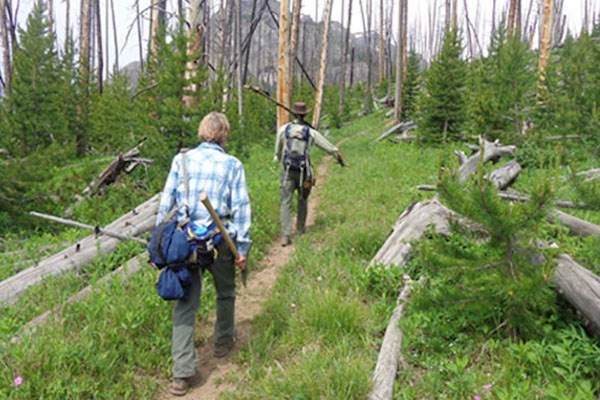
Also consider: The American Hiking Society offers weeklong “volunteer vacations” with trips ranging from “easy-moderate” (low-impact day hiking with nights spent in a car or other indoor accommodation; primarily trail maintenance work) to “strenuous-very strenuous” (backpacking; work that may require heavy lifting). All involve some form of trail maintenance.
5. Spend a relaxing vacation with the family.
There’s a reason visitors return to Mackinac Island’s Grand Hotel year after year, generation after generation. There are the rocking chairs lining a porch nearly the length of two football fields. (Bonus: It looks out on the Straits of Mackinac, the connective waterway between Lakes Michigan and Huron.) The hotel’s location, on an idyllic island where fudge shops proliferate and cars aren’t allowed, only adds to the paradisiacal effect.
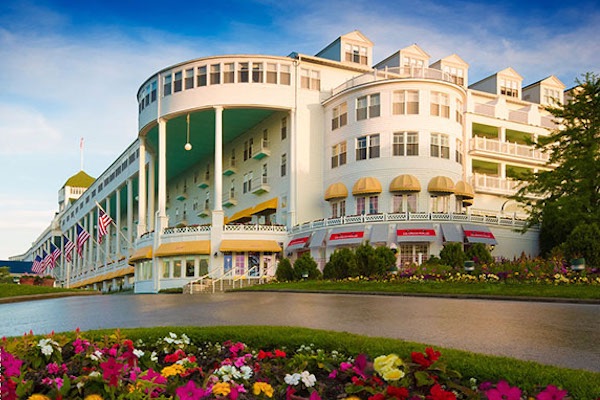
If the elusive, all-American, relaxing vacation—you know, “the way it used to be”—is a recurring theme of your dreams, this is your spot. Some of the leisurely pursuits haven’t changed since the hotel’s opening in 1887 (what better way to lure your teenager from their smartphone than with an old-fashioned game of croquet?), and an air of refinement abounds. Afternoon tea is still served in the parlor, complete with nibbles and live classical music. In the afternoons and evenings, guests can convene in one of two bars for cocktails. With the hotel preparing to officially open for its 137th season, there’s no better time to go.
Prefer a more cloistered retreat? The Ranch at Emerald Valley is one of three “wilderness experiences” at the expansive Broadmoor in Colorado Springs, but situated nine miles from the hotel amongst 100,000 acres of the Pike National Forest, it feels worlds away. This fully staffed retreat of 13 one- and two-bedroom cabins—as well as the three-bedroom Hill House—offers privacy and luxury, with the added benefit of being a short ride from the swanky spa, golf club and other activities available at the Broadmoor. Reserve one cabin or rent them all. You’ll be whisked around the plush hideaway via a Cadillac and spend your restorative vacation horseback riding, fly fishing and hiking, among other activities. Meals are served in the handsome grand lodge, and the twice-weekly cookouts are a perfect place for meeting new people.
6. Sleep.
Imagine being exposed to absolutely no artificial light for a week. That’s exactly the decree eight participants of a 2013 University of Colorado at Boulder study were given. After it was all said and done, the subjects had synchronized their internal clocks to the solar day, having “steadily shifted towards a sleep schedule that more closely mirrored the setting and rising of the sun,” according to a Smithsonian magazine article on the study.
So how does one begin to undo some of the damage caused by a constant barrage of lightbulbs and screen glow? Try camping while limiting your light to natural sources. Use Recreation.gov to find a campground—the farther away from a city, the better—for your restorative vacation. For extra-dark skies, the International Dark Sky Association’s website will guide you to especially dark nighttime locales. And if the thought of sleeping in a tent is enough to keep you up all night, bunk up in a cabin, but commit to candlelight only.
Also consider: Put yourself up in a luxe hotel and schedule a spa treatment for the evening hours. Some hotels have even created accommodations or treatments geared toward getting restful sleep. Colorado’s Exhale Spa at the Park Hyatt Beaver Creek Resort and Spa, for example, offers a “Slumber” massage. Sidle up to the table and allow your therapist to send you to repose.
7. Stay home for a relaxing vacation.
Ever been to a baseball game at your home field? Spent an afternoon in a faraway corner of the city? Playing tourist in your own town can be eye-opening and affordable—even if you opt to spend the night in a hotel (which we recommend).
“No place is ever fully explored, discovered or understood,” says Matt Kepnes, creator of the travel blog “Nomadic Matt” and author of How to Travel the World on $50 a Day. “There are always cultural quirks to understand and new dirt to set foot on.” Kepnes, who has visited around 100 countries, has several tips for getting the most out of your staycation. Start by adopting a tourist’s mentality. “Coming back home after traveling isn’t easy,” he says. “The excitement of traveling fades and you go back to normal life. Thus, making a conscious effort to continue exploring will make that stay at home much more fun, just like it is on the road.”
Another trick? Take a class. “Learning something new immediately takes you into a different and excited state of mind. It also gives you the opportunity to meet people you probably wouldn’t otherwise meet and gain a different perspective,” he says.
An additional benefit for locals planning a restorative vacation in their own hometown? “When you live in a place, you aren’t restricted to doing fun things only on the weekends,” explains Kepnes. “Depending on the activity, you may be able to join in during off-peak times and get discounted rates.”
Also consider: Sites such as Airbnb.com and HomeExchange.com make living like a local possible all over the map. Without time-sucking household distractions—laundry, cleaning, lawn-mowing and the like—you’ll be able to experience a relaxing weekend in the comforts of (someone else’s) home.
8. Get lost in nature.
It’s bigger than the state of Rhode Island, and the nearest airport is 235 miles away. Cellphone signals are sparse, and Wi-Fi is nearly nil. Visitors to West Texas’ Big Bend National Park are few—around 581,000 in 2021 compared to the over 14.1 million visitors to the Great Smoky Mountains the same year. These facts promise a boon for any maxed-out, talked-out searcher of solitude.
A restorative vacation here allows you to disappear, unplug and bask in the sound of silence. For most of the year, the desert landscape is dry, hot and harsh. But spring means the thick-skinned creosote, agave and cactuses are joined by delicate flowers, softening the landscape with splashes of color. To wrap your head around its enormity, think about the park in three distinct environs: mountain, desert and river. If you prefer your isolation with some serious physical exertion, hike the 12- to 14.5-mile South Rim trail or 10.5-mile Emory Peak trail from end to end. Up here, desert flora gives way to trees and, from Emory Peak, staggering views of the Chihuahuan Desert. Back on lower ground, sign up for a float trip through the Santa Elena Canyon—its limestone walls rise up to 1,500 feet above the Rio Grande.
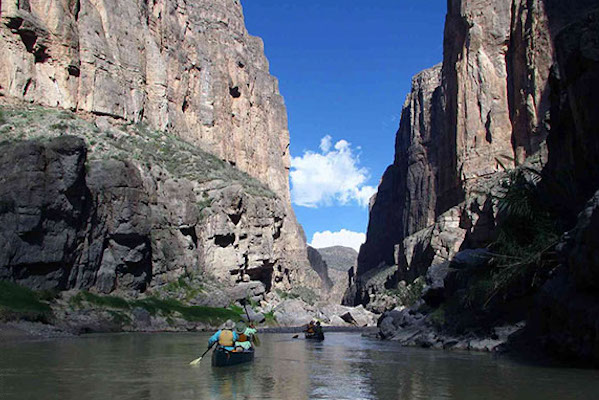
Cap off your visit with a trek to the Window, a hike that commences at the Chisos Basin trailhead. Get to the Window at sunset and peer out over the grand, unfettered desert below.
Also consider: Located over 100 miles from Charleston, South Carolina, Congaree National Park is best explored by kayak or canoe. The Cedar Creek Canoe Trail weaves 15 miles through primeval old-growth forest draped in Spanish moss. Don’t forget to look up. Many of the park’s inhabitants dwell in the towering trees—”some of the tallest trees in eastern North America,” according to the National Park Service. The birdsong, spliced with the sound of your paddle gliding through the water, is serenity as you’ve never seen—or heard—it before.
9. Take a wellness-inspired vacation to relax.
The revered Rancho La Puerta resort, located in Tecate, California, was created in 1940. All 86 rooms are luxurious freestanding casitas scattered throughout the resort grounds. Think of it as an idyllic, wellness-focused village, one where hammocks are strung between trees and a six-acre organic farm feeds the residents. Expect a mix of communal activities, personal reflection and recovery time. You’ll plan your weeklong restorative vacation from a robust roster of activities, including fitness classes such as yoga, meditation, kickboxing and barre.
Also consider: Hiking is paramount at Mountain Trek in Ainsworth Hot Springs, British Columbia, Canada. A stately lodge overlooking Kootenay Lake is your respite for the week. Days are spent doing yoga; eating the healthiest, freshest, most nourishing food you’ve ever had; and, of course, hiking—all while breathing clean mountain air. Fitness classes, health workshops, spa treatments and soaks in the natural mineral hot springs complete the weeklong health program here. The goal? Go home detoxed, rejuvenated and a few pounds lighter, armed with the know-how and willpower to keep it that way.
10. Learn a new skill.
Tucked among the pine, cedar, fir and oak in California’s San Jacinto Mountains, Idyllwild Arts is a beacon of immersive, arts-focused restorative vacations. A boarding school for high schoolers from September to May, it opens to the public in the summer, offering courses in everything from metalwork and paper marbling to Native American arts such as Cahuilla basketry. All the while you’ll be surrounded by people wholly dedicated to their craft and to Idyllwild.
Got kids? Sign up for “Family Week.” While the little ones are dancing, drawing and crafting ceramic sculptures, you can immerse yourself in workshops, hiking and swimming. Adults can also venture off campus: Idyllwild—an unincorporated town with a golden retriever, Maximus Mighty-Dog Mueller III, for its mayor—brims with charming inns and cabins.
Also consider: Two hours from Atlanta in Brasstown, North Carolina, a longstanding institution called the John C. Campbell Folk School ensures crafts like basketry, blacksmithing and scrimshaw are never lost. Weekend and weeklong classes are offered year-round, for adults only.
This article appeared in the May 2016 issue of SUCCESS magazine and was updated April 2023. Photo by Zigres/Shutterstock



